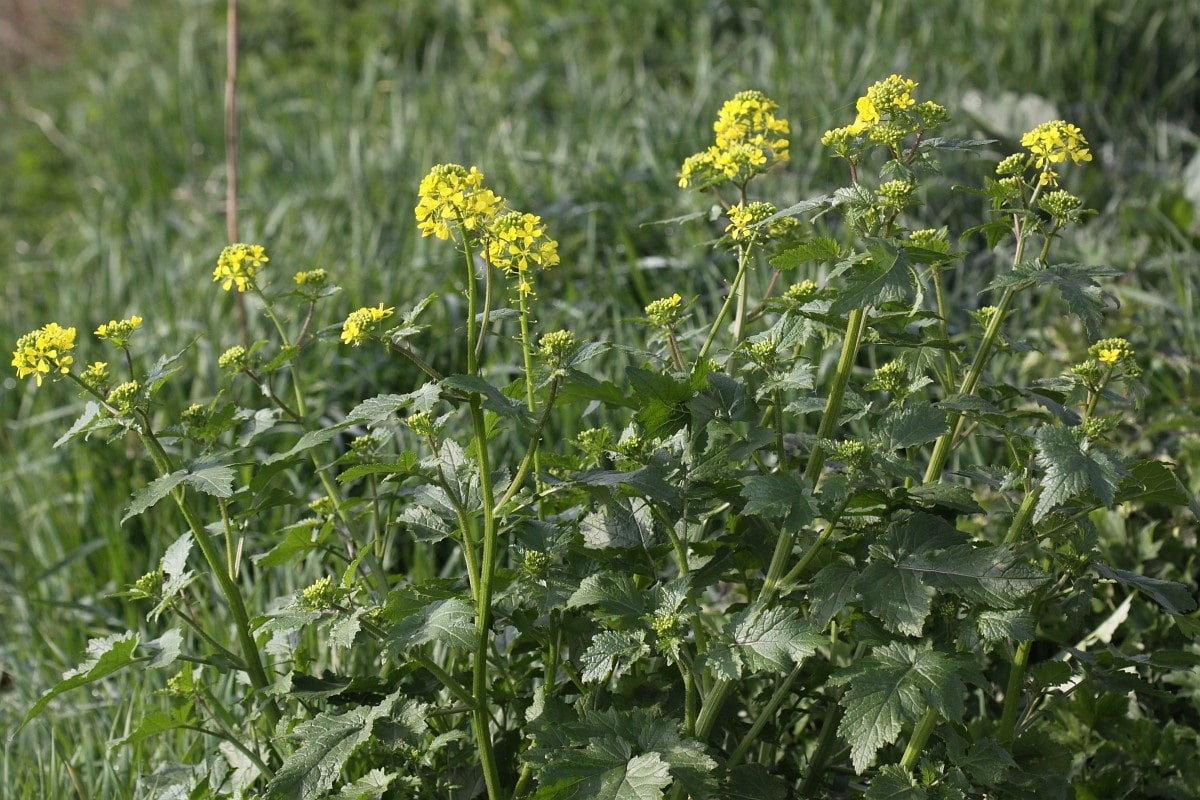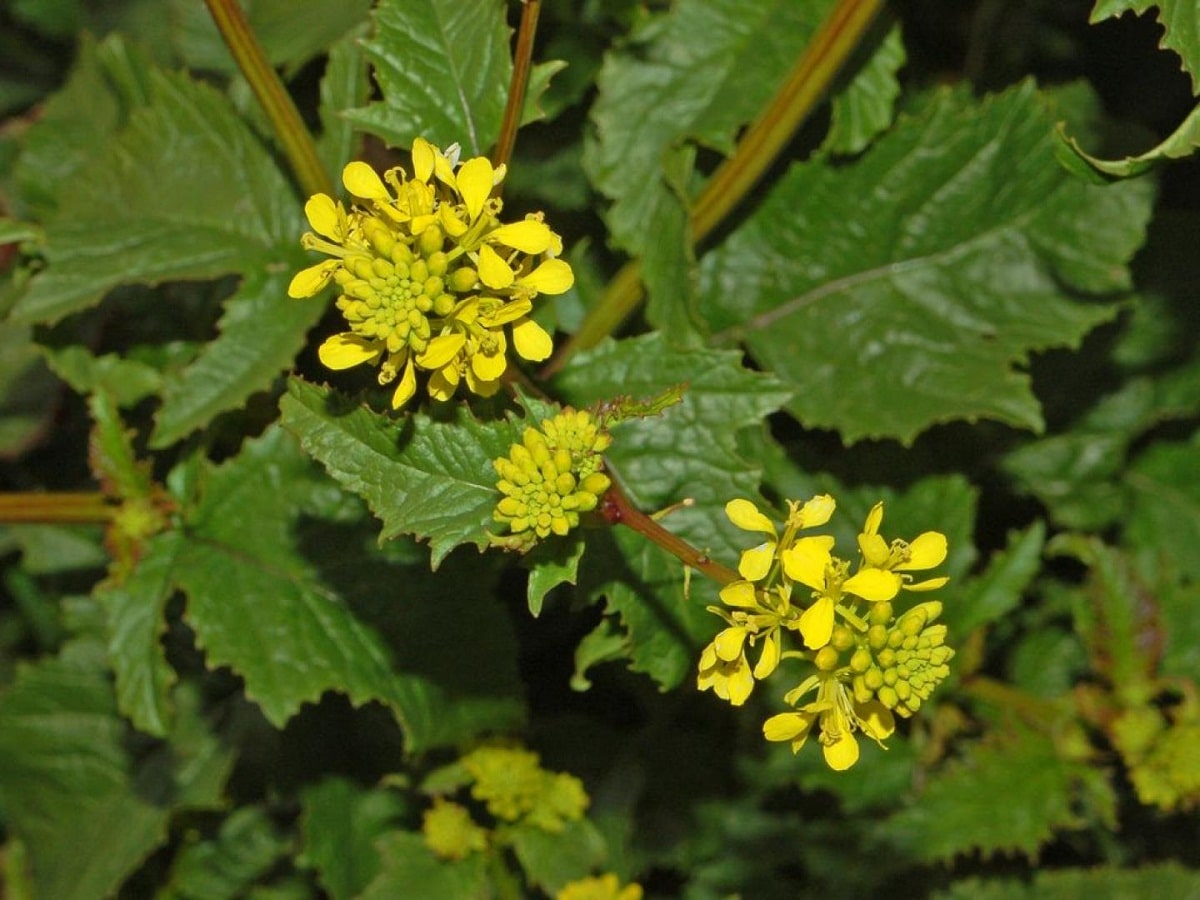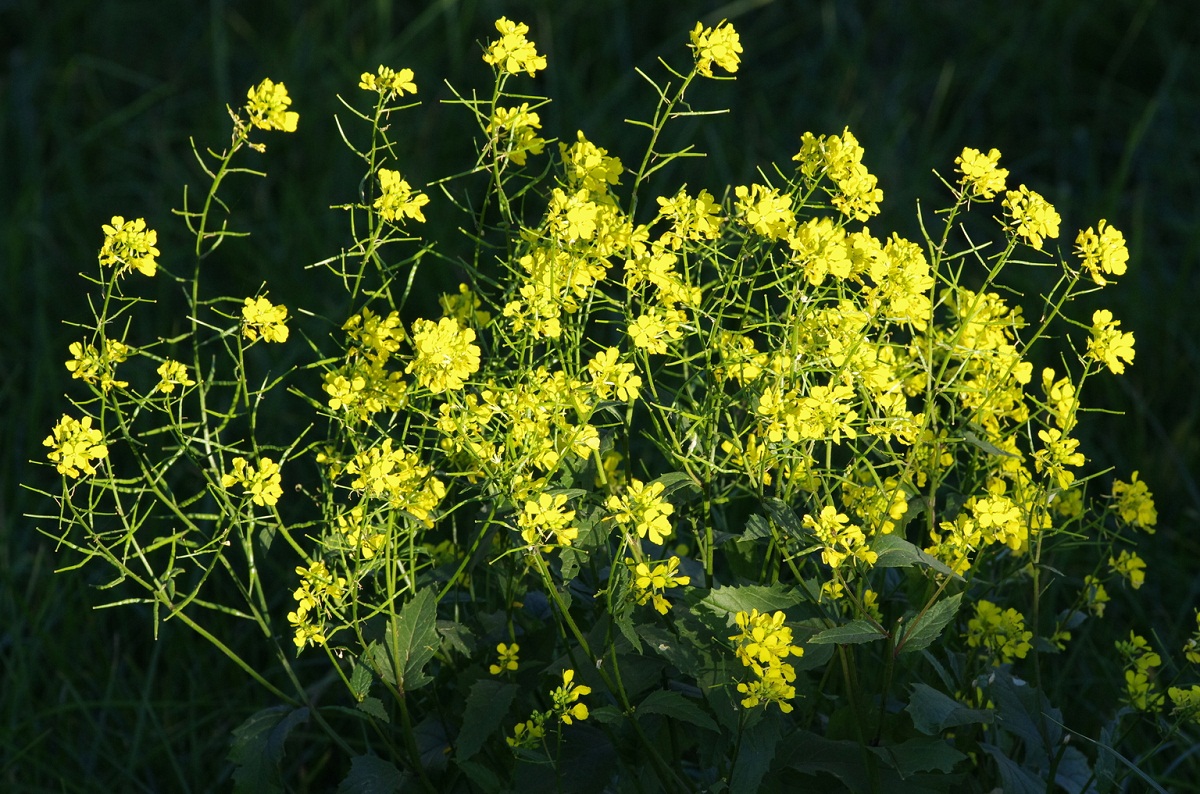
La Synapis arvensis, popularly called "field mustard", consists of a plant belonging to the family Brassicaceae, which despite being originally from Europe has also managed to naturalize within North America. If you want to know more about her, we invite you to read this post, especially dedicated to field mustard.
This annual herb it is a deciduous plant, which has the capacity to grow approximately 1mt high; Its stems are characterized by being erect and having hairiness around their base, being highly branched and longitudinally striated, with an approximate height of 100cm.
Her CARACTERISTICS

It has large toothed or pinnate leaves at its base, with a length of around 30cm, which can be sessile or have a short petiole. Its lower leaves are usually lyrated and petiolate, presenting a larger terminal lobe, compared to the other pairs of lateral segments, having a subtly toothed margin; while the upper leaves are distinguished by being sessile, lanceolate, toothed and not being divided.
Its inflorescence consists of a terminal raceme without bracts and elongated composed of small yellow flowers that have 4 petals of 9-10mm; Their pedicels have an upright shape and are patent, as are their sepals, which measure around 5mm, are green in color and, on some occasions, are different from each other. They have 4 short stamens and two more a little shorter.
Likewise, its fruit is a squashed, quadrangular silique, whose length is around 3-5cm; the leaflets have between 3-7 clearly marked veins, although the middle one is not usually really visible, in addition, its 2 locules have seeds arranged in a row composed of 4-8 of them.
Said fruit has a final part known as the “face”, which is about 12-15mm long, is conical in shape and houses one or more seeds. Similarly, we can point out that, in general, the sinapis arvenis it blooms between the months of February and October.
Caring for the Synapis arvensis
Next, we will give some small tips about the care that should be given to field mustard:
- Light: Although they prefer to develop in full sunlight, the truth is that they are fully capable of supporting growing in the shade.
- Temperature: It is best if they are grown in a hot climate.
- Humidity: The sinapis arvenis It should be grown in soils that are moderately dry to humid.
- Acidity: Prefers soils whose bases are rich in an approximate pH of 5.5-8.
- Nitrogen: Tends to prefer slightly rich soils or, failing that, moderately poor; It is not suitable for soils with an excess of fertilizers.
Properties of field mustard
Some of the most remarkable properties of the sinapis arvenis, consist of those mentioned below:
It is possible to use its seeds in the same way as those obtained from white mustard. Causes irritating effects on the skin, in addition to producing vasodilation of the cutaneous capillaries, making it ideal for treating joint ailments, neuritis and rheumatism.
It has sinapine, a substance that has an antibiotic effect that allows it to fight Gram negative bacteria. Because it is toxic when used in large doses, it is always best to use it moderately. Using it externally in excess could cause blisters and in the worst cases, also necrosis.
The leaves stand out for being edibleThey have a slightly spicy flavor and are very appropriate for salads; For their part, the old leaves have a slightly acidic taste and can be used to prepare stews. When its flowers have not yet opened, the stems can be used as substitutes for broccoli.
On the other hand, it is possible to consume its seeds both raw and mixed together with sandwiches and / or salads to give it a spicier taste; equally, can be ground to be used as flavorings for various dishes, since they have a slight touch of authentic mustard, from which they take their name. Its seeds are also used to obtain oil.
Farming
The cultivation of this plant is carried out not only in order to collect its seeds and process them in order to get food, but also usually grown as a mulch and green manure plant; as well as to increase or maintain the fertility of the soil when it is cultivated internally, since it has a rapid growth.
If you are interested in growing mustard in order to produce food, you need to bear in mind that Before sowing it, you must prepare the ground thoroughlyFor this, you must make sure to provide both a good tillage and adequate fertilization, preferably using organic material.
Likewise, it is convenient that we mention that the most successful thing is that this is grown in areas with high sun exposure and little shade; You must also bear in mind that it is a plant that does not support cold weather very well, so it could die. In this sense, it is best to sow it at the beginning of spring (at a time when night temperatures are not lower than 10 ° C) in order to harvest its seeds when the summer ends.
Possible store your seeds immediately after collecting them, or place them inside airtight containers after they dry completely. In this sense, we must point out that the harvest of this plant has to be carried out when the fruits have not yet fully reached maturity; then they must be placed in the sun not only to dry, but also to finish maturing.
Only you should water it when there are prolonged dry spells, since in general the water obtained from the rains is enough for them. Likewise, it must be said that field mustard could be cultivated as an annual or biannual plant with the purpose of collecting both its leaves and its seeds, respectively.
Management

In relation to the diseases that the sinapis arvenis, it should be noted that, in general, aphids often ruin both buds and flower buds, negatively affecting the production of your seeds.
Likewise, it is very probable that the climatic conditions that suppose a poor crop will end up devastate mustard and cause decomposition, thus allowing it to have a greater risk of being attacked by pests and various diseases.
Especially and at the end of spring and beginning of autumn, this plant is usually quite susceptible to being attacked by powdery mildew; so it is highly recommended to grow it in an open and properly ventilated space, trying to avoid whenever possible, that the leaves end up wet when watering the plant.
Similarly, it is very common for them to be attacked by slugs and snails, as well as beetles, which produce holes around the leaves that end up weakening the plant. So if you are thinking of growing it, do not forget to take into account the above information, it will surely help you to get a strong and healthy plant.